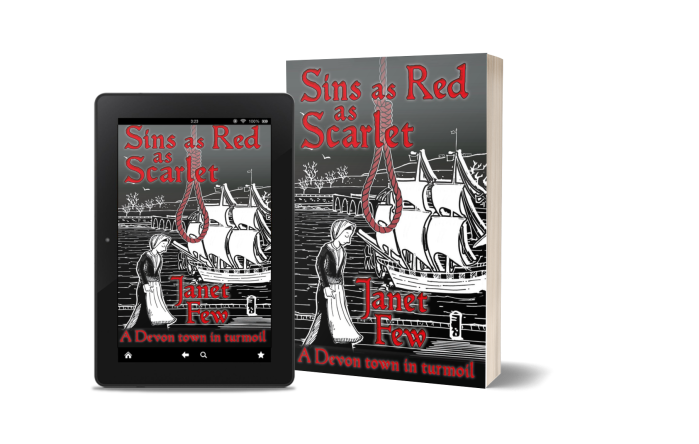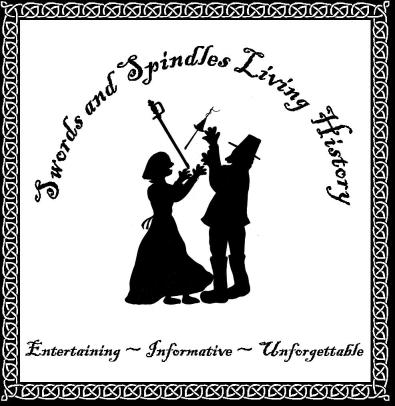I know, I know, we all thought that Mistress Agnes couldn’t write. Well it seems that she has enlisted an assistant to the pen the tale of her town. Here is a little about her creation, which is now available for you to obtain in exchange for good coin.
Sins as Red as Scarlet is based on actual events that took place between 1640 and 1682; a time when the Age of Reason had begun and scientific thought was ousting superstitious belief. The menacing days of the witchfinder had all but gone. Nevertheless, in Devon’s county town, three impoverished women were condemned to death for the crime of witchcraft. They came from Bideford, a prosperous port, with flourishing tobacco warehouses and ships departing for the Newfoundland cod-banks or taking pottery across the Atlantic. It was a time of plague, of war and of religious dissent, all of which fashioned the prejudices and fears of the town’s inhabitants.
There is also a modern strand to the book (Mistress Agnes clearly has soothsaying powers), which follows sixteen-year-old Martha, as she researches the seventeenth century history of her home-town and comes to realise that human nature does not change; intolerance and peer pressure have always exerted their power. Yet there have been and still are, those who stand aside from the bigotry and the victimisation. Probing the motivations and beliefs of Bideford’s seventeenth century residents, Martha comes to understand how past events might lead ordinary people to become the victims, the accusers, or the accused. In the process, Martha finds a new resilience, enabling her to rise above those who seek to demean her.
Sins as Red as Scarlet can be obtained from Bideford bookshop, Walter Henry’s, from Blue Poppy Publishing and from the author (that’s the actual author, not Mistress A.). The first 500 purchasers who order directly from Janet, will also receive a complimentary copy of her social history of the seventeenth century Coffers, Clysters, Comfrey and Coifs. For details of this offer see here. Sins as Red as Scarlet is also available on Kindle.


